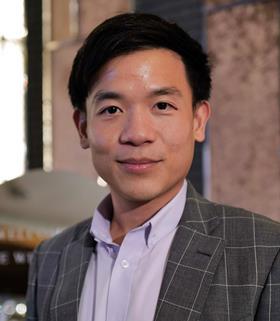Clean water innovations: Addressing global challenges
Clean water innovations: Addressing global challenges | Webinar Chemistry World


Contaminated Water and Sustainable Development Goals
Click the button below to register
Contaminated water poses a significant threat to a large portion of the global population. Approximately 1.8 million people worldwide lack access to safe and sustainable drinking water. This issue is exacerbated by pollutants such as bacteria, viruses, chemicals, and heavy metals infiltrating water supplies, putting vulnerable communities at risk of disease. Addressing global water quality problems requires collaborative efforts with different technological and chemical approaches to testing and decontamination, depending on the specific region. These efforts align with the Sustainable Development Goals (SDGs) set by the United Nations to achieve a better and more sustainable future for all.
In an effort to combat this issue, scientists are working at the forefront of water quality science. They are utilizing bio- and geochemical approaches to detect and trace contaminants in water supplies. By understanding the sources and distribution of pollutants in groundwater systems, scientists can identify optimal remediation solutions to provide clean, safe drinking water. This aligns with SDG 6: Clean Water and Sanitation, which aims to ensure availability and sustainable management of water and sanitation for all.
One innovative solution involves the development of technologies that harness solar power to achieve a dual purpose: generating clean water and clean fuel simultaneously. These technologies have the potential to address immediate water quality concerns while also contributing to global sustainability. By utilizing renewable energy sources, such as solar power, these technologies align with SDG 7: Affordable and Clean Energy, which aims to ensure access to affordable, reliable, sustainable, and modern energy for all.
To learn more about how scientists are using chemistry to identify threatened water supplies and developing new technologies for water treatment, register now for our hour-long, interactive webinar. This webinar will provide insights into the importance of addressing water quality issues in line with the SDGs. It will also highlight the role of communities in taking charge of their own water supplies, aligning with SDG 17: Partnerships for the Goals, which emphasizes the importance of collaboration and partnerships to achieve the SDGs.
Meet the speakers

Laura Richards
Laura Richards is a Dame Kathleen Ollerenshaw Fellow and senior lecturer in the Department of Earth and Environmental Sciences at The University of Manchester, UK. Laura is trained as a chemical engineer. She has a BSc from the University of Colorado, USA, an environmental engineering MSc from University of North Carolina, USA and a PhD from Heriot-Watt University, UK. Laura’s current research focuses predominantly on field-based investigations of groundwater geochemistry, mobilisation and transport of geogenic and emerging contaminants, decision support for remediation selection and human-environment interactions in areas across South and Southeast Asia, South America and Sub-Saharan Africa. In addition to her scientific work, Laura is committed to championing equality, diversity and inclusion in science, technology, engineering and mathematics disciplines in higher education.

Chanon Pornrungroj
Chanon received his PhD degree from the University of Cambridge, UK, in 2023 under the guidance of professor Erwin Reisner. Currently, he is a lecturer at the Department of Chemical Engineering, Chulalongkorn University, Thailand. His research focuses on complementary solar conversion approaches, energy storage, water purification, solar fuels, green hydrogen, photoelectrochemical devices, and artificial photosynthesis.
Click the button below to register
SDGs, Targets, and Indicators
1. Which SDGs are addressed or connected to the issues highlighted in the article?
- SDG 6: Clean Water and Sanitation
- SDG 7: Affordable and Clean Energy
- SDG 9: Industry, Innovation, and Infrastructure
- SDG 11: Sustainable Cities and Communities
- SDG 13: Climate Action
The article discusses the issue of contaminated water and the need for safe and sustainable drinking water. This aligns with SDG 6, which aims to ensure availability and sustainable management of water and sanitation for all. The mention of innovative technologies that use solar power for water treatment also connects to SDG 7, which focuses on affordable and clean energy. Additionally, the development of new technologies and collaborative efforts mentioned in the article relate to SDG 9, which promotes industry, innovation, and infrastructure. The implications for global sustainability mentioned in the article are relevant to SDG 11, which aims to make cities and human settlements inclusive, safe, resilient, and sustainable. Finally, the mention of addressing immediate water quality concerns and the potential for clean fuel generation aligns with SDG 13, which focuses on climate action.
2. What specific targets under those SDGs can be identified based on the article’s content?
- Target 6.1: By 2030, achieve universal and equitable access to safe and affordable drinking water for all.
- Target 7.2: By 2030, increase substantially the share of renewable energy in the global energy mix.
- Target 9.5: Enhance scientific research, upgrade the technological capabilities of industrial sectors in all countries, in particular developing countries, including, by 2030, encouraging innovation and increasing the number of research and development workers per 1 million people.
- Target 11.1: By 2030, ensure access for all to adequate, safe and affordable housing and basic services and upgrade slums.
- Target 13.3: Improve education, awareness-raising, and human and institutional capacity on climate change mitigation, adaptation, impact reduction, and early warning.
Based on the article’s content, the specific targets that can be identified are as follows:
– Target 6.1 focuses on achieving universal access to safe and affordable drinking water, which is relevant to the issue of contaminated water discussed in the article.
– Target 7.2 aims to increase the share of renewable energy in the global energy mix, which aligns with the mention of using solar power for water treatment.
– Target 9.5 emphasizes enhancing scientific research and technological capabilities, which relates to the development of innovative technologies mentioned in the article.
– Target 11.1 focuses on ensuring access to adequate housing and basic services, which is relevant to the goal of providing clean and safe drinking water to communities.
– Target 13.3 highlights the importance of education and awareness-raising on climate change, which is relevant to the implications for global sustainability mentioned in the article.
3. Are there any indicators mentioned or implied in the article that can be used to measure progress towards the identified targets?
Yes, there are indicators mentioned or implied in the article that can be used to measure progress towards the identified targets. However, the article does not provide specific quantitative data or measurements. Indicators could include:
– Percentage of population with access to safe and sustainable drinking water (related to Target 6.1)
– Share of renewable energy in the global energy mix (related to Target 7.2)
– Number of research and development workers per 1 million people (related to Target 9.5)
– Percentage of population with access to adequate housing and basic services (related to Target 11.1)
– Level of education, awareness, and capacity on climate change mitigation and adaptation (related to Target 13.3)
4. SDGs, Targets, and Indicators
| SDGs | Targets | Indicators |
|---|---|---|
| SDG 6: Clean Water and Sanitation | Target 6.1: By 2030, achieve universal and equitable access to safe and affordable drinking water for all. | Percentage of population with access to safe and sustainable drinking water |
| SDG 7: Affordable and Clean Energy | Target 7.2: By 2030, increase substantially the share of renewable energy in the global energy mix. | Share of renewable energy in the global energy mix |
| Target 7.x: Other relevant targets related to affordable and clean energy | Other relevant indicators related to affordable and clean energy | |
| SDG 9: Industry, Innovation, and Infrastructure | Target 9.5: Enhance scientific research, upgrade the technological capabilities of industrial sectors in all countries, in particular developing countries, including, by 2030, encouraging innovation and increasing the number of research and development workers per 1 million people. | Number of research and development workers per 1 million people |
| Target 9.x: Other relevant targets related to industry, innovation, and infrastructure | Other relevant indicators related to industry, innovation, and infrastructure | |
| SDG 11: Sustainable Cities and Communities | Target 11.1: By 2030, ensure access for all to adequate, safe and affordable housing and basic services and upgrade slums. | Percentage of population with access to adequate housing and basic services |
| SDG 13: Climate Action | Target 13.3: Improve education, awareness-raising, and human and institutional capacity on climate change mitigation, adaptation, impact reduction, and early warning. | Level of education, awareness, and capacity on climate change mitigation and adaptation |
Behold! This splendid article springs forth from the wellspring of knowledge, shaped by a wondrous proprietary AI technology that delved into a vast ocean of data, illuminating the path towards the Sustainable Development Goals. Remember that all rights are reserved by SDG Investors LLC, empowering us to champion progress together.
Source: chemistryworld.com

Join us, as fellow seekers of change, on a transformative journey at https://sdgtalks.ai/welcome, where you can become a member and actively contribute to shaping a brighter future.







